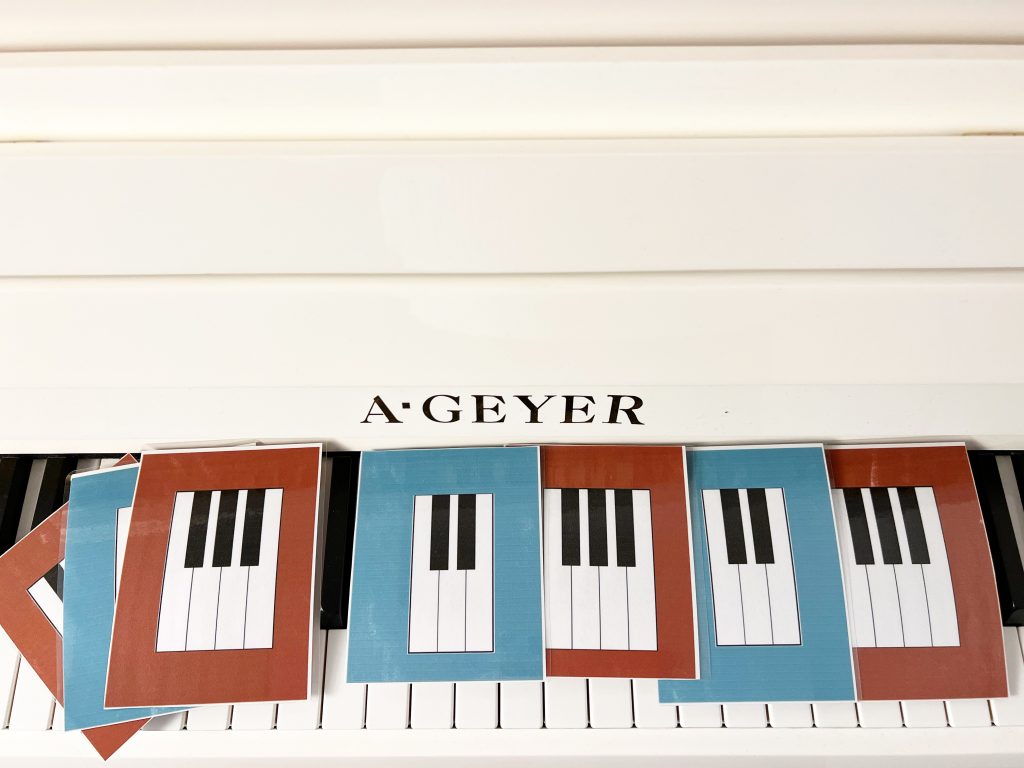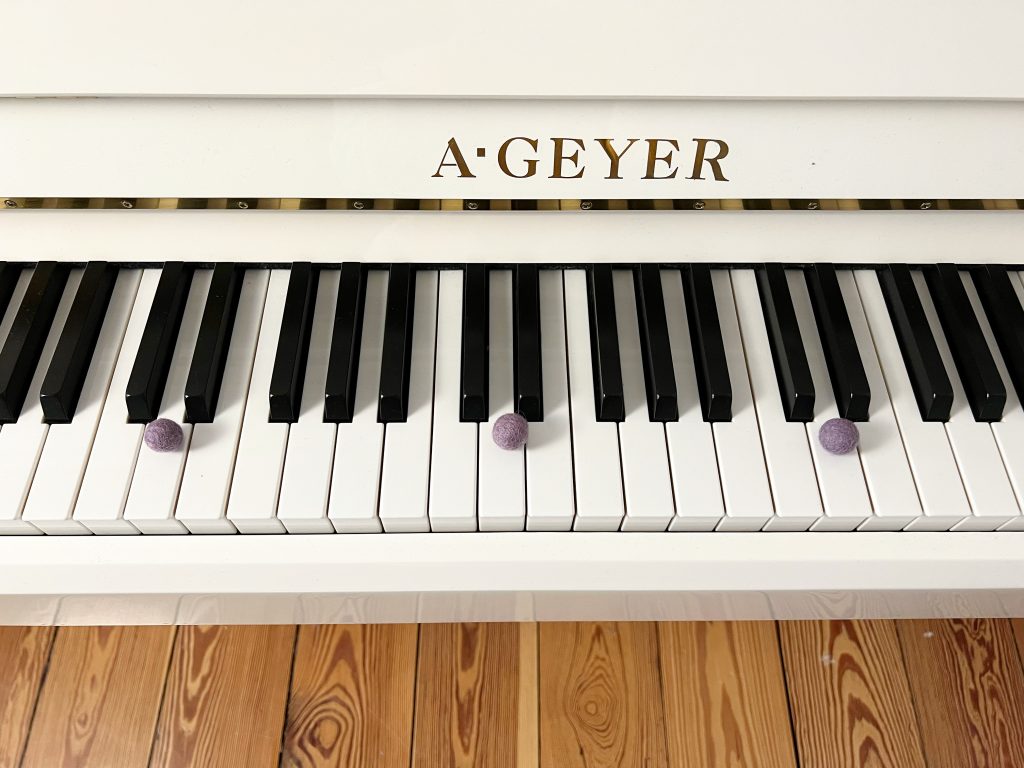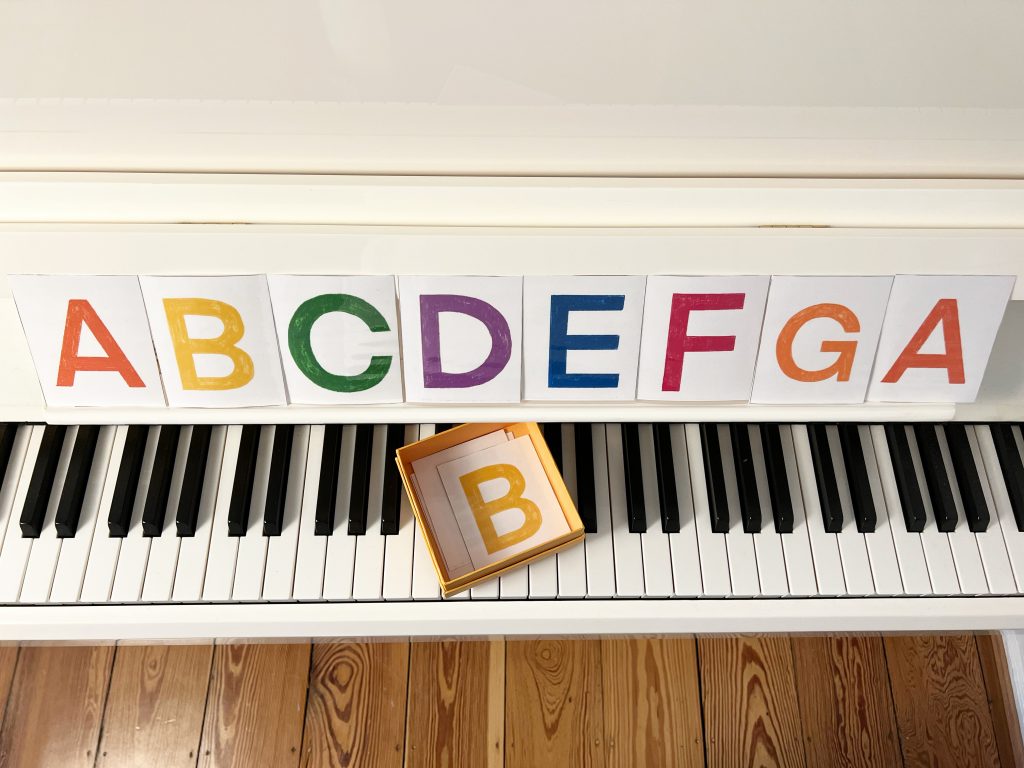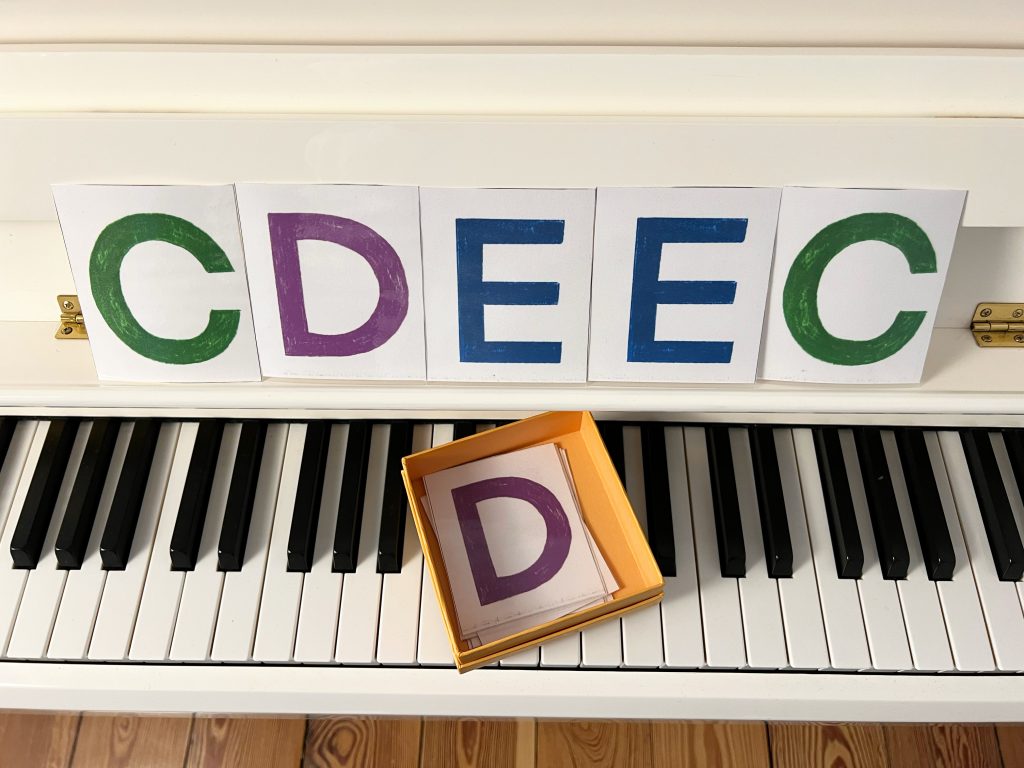The very first piano lesson is very exciting but also very important as it often reveals if a child is interested and ready to learn how to play the piano. Its 88 keys can be very intimidating, especially for younger learners, so we have to have as much fun as possible exploring the piano keys and sound together!
I am going to share my first piano lesson suggestions for kids ages 3-9 and hope this will guide you in having a lot of fun exploring the piano with a little pianist.
1. HIGH or LOW ?
I love to start first piano lessons with a quick and fun listening game! All you need are two cups and a box with colorful pompoms or gems. I prefer using paper cups because they are easy to label with the words “high” and “low.” The “high” cup goes on the right side of the piano where the high sounding keys are and the “low” cup to the left side of the piano with the lower sounding keys. The little pianist must turn away from the piano and listen while you play any random key. They have to decide if the key played sounded high or low by placing a pompom into one of the two cups. For example, if it was a high sounding key, he/she will have to put a pompom into the “high” cup and vice versa if it were a low sounding key.
This helps to get a first orientation on the piano of what is high, what is low, and where high and low is located on the piano. what high and low are, and where they are located on the piano.

2. Groups of 2 and 3 black keys
I use the Key’ndergarten printable for the next activity. You can find it for FREE in the first Unit of the Key’ndergarten program. The cards work just like a puzzle on the piano and kids usually recognize very quickly the repeating pattern with the colorful key group cards.
TIP: You can ask them to look for a LOW group of two black keys or a HIGH group of three black keys to repeat and reinforce the previous concept of HIGH and LOW.

3. Looking for D keys on the piano
We will need the box full of gems or pompoms again!
I take one card with a group of 2 black keys and draw a circle onto the D key. Now the little pianist has to look for all the D keys that he/she can find. We play the Ds we have found from LOW to HIGH and point out that all the Ds sound the same just in high or low pitches.

4. The Musical Alphabet
It is time for the Key’ndergarten alphabet cards.
First, we sort them and quickly realize that it stops at G and starts over again from the next A. We also sort them starting from different letters like C and I point out that it goes C, D, E, F, G and starts from A again.

5. Musical alphabet on the piano
I point out that we already know where D is. For this activity I love using labeled gems or labeled popsicle sticks. First we look for all Ds again on the piano, then Cs, Es and so forth. I recommend to look for all Cs, all Es before trying to look for other letters.

6. Composing with the letter cards
If we are not too tired yet, we use the C, D and E cards to compose a little piece on the piano. I have the kids place them in the order they would like to and try to play the little tune on the piano.
This is a little pre-reading sheet music activity:

That is it! These are usually my first lesson activities. It Is okay if you do not get to do all of them during the first session… no matter how many of these you try, remember to have fun : )
Get your free printables in the sample unit1 to get started with the Key´ndergarten piano curriculum.
If you’d like to see more colourful Montessori inspired teaching ideas make sure to follow Key’ndergarten on Instagram or to sign up for the Key’ndergarten newsletter to get notified about new educational blogposts.
– Ms. Deniz

